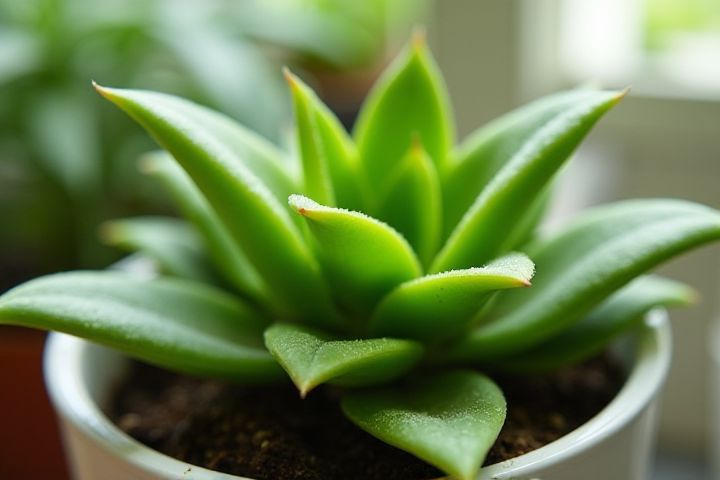
House plants need repotting to ensure healthy growth and vitality. Over time, the soil in the pot can become depleted of essential nutrients, affecting the plant's ability to thrive. Repotting allows you to refresh the soil, providing your plant with the necessary minerals and organic matter. Furthermore, roots can become root-bound, meaning they outgrow their current container, leading to stunted growth. By transferring your plant to a larger pot, you give it room to expand, facilitating better water drainage and air circulation around the roots.
Why House Plants Need Repotting
Root growth expansion
House plants require repotting to accommodate the natural expansion of their root systems, which can become bound in a pot that is too small over time. When roots lack space, they may become pot-bound, circling the edges of the container and restricting nutrient absorption and water uptake. Repotting not only provides more soil, which enhances moisture retention and nutrient availability but also promotes healthier root growth by reducing root crowding. To optimize your plant's health, consider repotting every 1-2 years, or sooner for fast-growing species.
Nutrient replenishment
House plants require repotting primarily to replenish essential nutrients in their growing medium. Over time, the soil becomes depleted of vital minerals and organic matter, which can stunt your plant's growth and affect its overall health. When you repot, you can refresh the soil with nutrient-rich potting mix, providing a more fertile environment for root development. This process not only revitalizes the plant's nutrient supply but also improves aeration and drainage, promoting robust growth and vitality.
Soil compaction prevention
Repotting house plants is essential to prevent soil compaction, which can restrict root growth and water absorption. Over time, soil can become dense and compacted due to watering and natural settling, leading to poor aeration and drainage. Regular repotting allows you to refresh the soil, providing better access to nutrients and oxygen that your plant needs for healthy growth. Ideally, you should consider repotting every 1 to 2 years or when you notice signs of compaction, ensuring your plants thrive in optimal conditions.
Improved drainage
House plants benefit significantly from repotting due to improved drainage, which is crucial for their health. When soil becomes compacted over time, it can trap excess moisture, leading to root rot and other issues. By transferring your plant to a larger pot with fresh soil, you enhance airflow and facilitate proper drainage, ensuring that roots receive the oxygen they need. This simple act not only extends the lifespan of your plants but also promotes vibrant growth and overall vitality.
Pest control
Houseplants require repotting to combat pest infestations effectively, as overcrowded roots can create conditions conducive to unwanted insects. Soil depletion and root rot foster environments where pests like aphids and spider mites thrive, making timely repotting essential. By transferring your plant to fresh soil, you not only provide it with vital nutrients but also reduce the likelihood of pests that typically reproduce in compacted or decaying medium. Regularly checking for signs of pest activity during the repotting process can help you maintain a healthier indoor garden.
Disease prevention
Repotting houseplants is essential for disease prevention, as it helps eliminate pathogens and pests that may thrive in old soil. Over time, soil can become compacted and depleted of nutrients, creating an environment conducive to root rot and fungal infections. When you repot, you provide fresh soil rich in nutrients, promoting healthy root growth and reducing the risk of disease. Regularly inspecting your plant's roots while repotting can help you catch any signs of decay early, ensuring a healthier plant.
Better plant stability
Repotting house plants enhances their stability by providing a more suitable environment for root growth. As plants grow, the original pot can become cramped, restricting root expansion and leading to instability. A larger pot allows for better anchorage, enabling the plant to absorb water and nutrients more effectively. Your plant's overall health improves with proper repotting, reducing the risk of toppling or falling due to inadequate support.
Enhanced air circulation
Repotting houseplants is essential for promoting enhanced air circulation around their root systems, which is vital for healthy growth. As plants mature, their roots can become tightly bound and compacted, restricting airflow and leading to potential root rot or stunted growth. When you transfer your plant to a larger pot with fresh potting soil, you create a more oxygen-rich environment that encourages strong root development and improves nutrient absorption. Improving air circulation not only benefits the plant's health but also creates a more vibrant indoor atmosphere by fostering lush, thriving greenery in your home.
Growth stimulation
Houseplants require repotting to stimulate growth by providing fresh soil and more space for root expansion. Over time, the nutrients in the original soil deplete, which hampers the plant's ability to absorb essential minerals and water. When you repot, you can introduce nutrient-rich soil that enhances root health and overall vigor. Moreover, increased space in a new pot allows your plant's roots to develop more freely, fostering robust growth and vitality.
Aesthetic renewal
Repotting house plants not only promotes healthy growth but also enhances their aesthetic appeal within your home. Over time, plants can outgrow their containers, leading to a cluttered appearance that detracts from your space's beauty. By transferring them to larger, more visually appealing pots, you can create a more harmonious and inviting environment. This process allows you to refresh your decor, ensuring that your indoor greenery remains vibrant and integral to your home's aesthetic.
